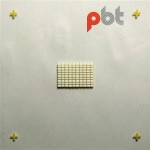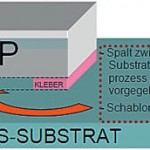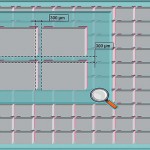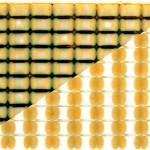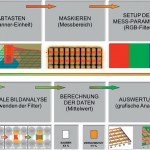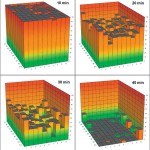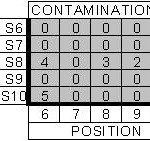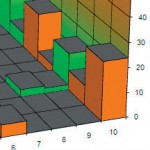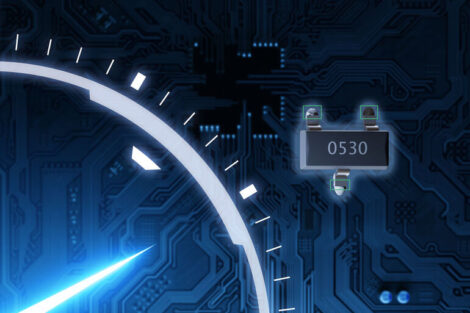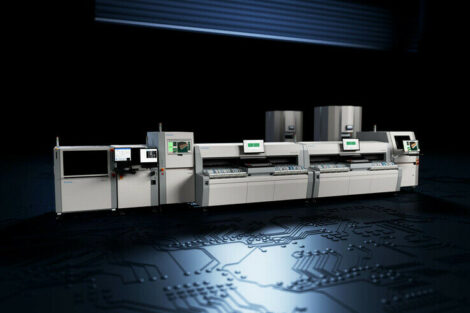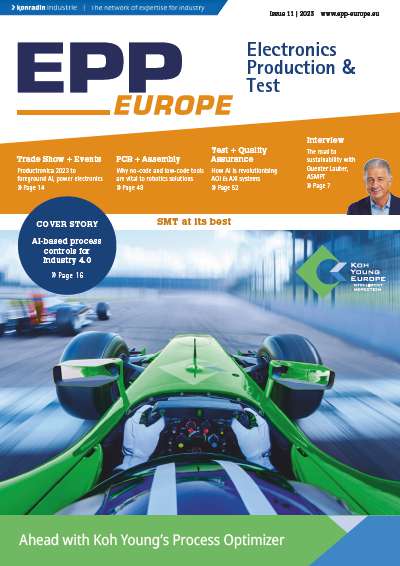A method of measuring cleaning efficiency by means of numerical evaluation of rest contamination under the component was developed and evaluated in different test situations. This method uses very stable mechanical samples on clear glass substrate, which enables optical scanning from the lower side. Condition for cleaning is set to be very difficult to obtain maximal sensitivity of the method. The sample is than analyzed by means of AOI and special software so that the quantitative evaluation of the cleanliness of the sample is possible. The method has been tested in different applications – comparing different cleaning methods at different cleaning systems, leaving the chemical parameters of the process constant. Also, by means of evaluation samples, the design of the cleaning system has been optimized.
Vladimír Sitko, Pbt Rožnov Ltd., Rožnov p. R., and Michal Šaffer, Ival Szendiuch, Martin Bursík, Brno University of Technology, Brno, Czech Republic
Cleaning, similar to other process steps of electronics assembly, has become more critical because of the changing of a lot of flux properties with the conversion to lead-free. On the other hand, demands on cleanliness of assemblies have grown as a result of component miniaturization and growing signal speed. To clean the areas under components perfectly became the most critical parameter of the cleaning process. The introduction of new environmental regulations such as WEEE, RoHS and eco-design forms more difficult conditions – the tendency is to use more “mild” cleaning chemistry in order to fulfill all newly established criteria for environmentally-friendly processes. Additionally, many of the electronic assembly manufacturers, traditionally, refuse to clean with ultrasonic. Although the conditions of that effective method have changed tremendously from the times of MIL standards limitations, many people even do not know that ultrasonic cleaning is no more prohibited for high-reliable product cleaning. All this led to growing importance of mechanical agitation during the cleaning process. There are a lot of different approaches to other methods than ultrasonic cleaning on the market. Almost every manufacturer has its own strategy and so far there was no testing method, which would be able to compare those methods.
Measurement method – mechanical sample
After a long research and testing, we have introduced a method, which could be used for the comparison of different cleaning processes. Cleaning results, so far, can be tested by contaminometer or ionographic methods. But those, unfortunately, do not tell anything about local contamination. Since modern fluxes (good no-clean fluxes) are very difficult to be dissolved, the result of contaminometer depends not only on the residual impurities, but also on the solubility of those. Other methods are optic. Generally when checking cleaning under components there is only the destructive way, or, in limited cases endoscopic observations (Ersascope) – but both of these methods are only qualitative. We have designed a sample-model of cleaned components, which is very resistant (made of glass and ceramic) and very accurate (gaps under components have quite precise dimensions). The result of the cleaning – not completely dissolved contamination under “components” can be evaluated with the help of AOI and converted to the numerical result. A big advantage of the sample is that it is reusable. This enables to make even interrupted testing with the identical model. This feature is very advantageous for monitoring the dynamics of the cleaning process – studies of changing cleaning speed during the process are possible. The sample has to be prepared for testing. The array of “chips” is filled with the synthetic, no-clean lead-free flux (the medium of solder paste) and than reflow-soldered in the oven to simulate real conditions of soldering.
All conditions – small gap under components, small distance between components and fully-synthetic flux has been chosen to get maximal sensitivity of the sample on cleaning parameters. (The cleaning times of such a sample are longer than to clean a regular PCB.) This “difficult-to-clean-sample” has enough resolution to find even small differences between processes.
Measurement method – processing of test results
The evaluation method is an optical one. The scan of the sample through the glass substrate has all necessary information on the rest contamination which was not dissolved during the cleaning process. By means of a special software for AOI it is possible to determine a value of rest contamination against the original stage (the whole space under components filled with flux.) The scanned and evaluated rest contamination area under each “chip” is converted to a single-value. Thus, mapping of the sample results of the matrix of figures, which is describe the cleaning result. This helps to determinate also irregularities of cleaning within the sample (i. e. non-uniform effect of spraying field when spray beam reaches the sample only from the side). The way to obtain matrix figure of the sample is shown in figure 4.
An example of samplings taken during one cleaning process is shown in figure 5. It shows a progress in cleaning the sample matrix after 10, 20, 30, 40 minutes. The process was always interrupted, dried with pressure air only and submitted to scanning to read values. During this measuring, all cleaning parameter were kept constant. Such a study helps to optimize mechanics of the cleaning system. It is also possible at the system with “constant“ mechanics properties to check the quality of the chemistry in the process. By such a method, it is possible to make some kind of „external calibration“ of cleaning process, to see, whether the whole system has always it´s original power, or if some machine parameter or chemical parameter does not correspond with the original values any more.
The method was used for the optimization of the spray-cleaning system Super Swash. The introduction of that method has helped very much to find an optimal configuration of nozzles, speed, pressure and nozzle pattern. With the help of this method, the process parameter has increased dramatically against the previous generation of such a cleaning machine. (Lower process times, lower consumption of cleaning liquid, better uniformity across the cleaning field.)
EPP Europe 444
zusammenfassung
Vorgestellt wird eine Methode, die Effizienz von Reinigungsmethoden zur Entfernung von Restkontamination unter Bauelementen messtechnisch zu erfassen und numerisch darzustellen. Das Verfahren wurde in verschiedenen Testsituationen entwickelt und verifiziert. Durch die Auswertung der Versuchsergebnisse konnte die Konstruktion der eingesetzten Reinigungsanlage optimiert werden.
L’article présente une méthode permettant de déterminer, à l’aide de mesures, l’efficacité des méthodes de nettoyage destinées à éliminer la contamination résiduelle sous les composants et de les représenter numériquement. Le procédé a été développé et vérifié dans différentes situations de test. L’analyse des résultats de l’expérience a permis d’optimiser la construction de l’installation de nettoyage utilisée.
Viene presentato un metodo per rilevare con tecniche di misurazione e rappresentare numericamente l’efficienza di metodi di pulitura per l’eliminazione di contaminazione residua al di sotto di componenti. Il processo è stato sviluppato e verificato in diverse situazioni di prova. Attraverso la valutazione dei risultati della prova è stato possibile ottimizzare la costruzione degli impianti di pulitura utilizzati.
Acknowledgement and references
This work is a result of cooperation between company PBT Rožnov p.R. s.r.o. and the Technical University Brno, supported by Research project of Czech Ministry of Education within the framework of Research Plan MSM0021630503 “MIKROSYN New Trends in Microelectronic Systems and Nanotechnologies”.
- 1. ELLIS, B. N. Cleaning and contamination of electronics components and assemblies. Ayr: Electrochemical publications limited, 1986, 376 stran. ISBN 0 901150 20 7
- 2. CALA, F.R., WINSTON, A.E. Handbook of aqueous cleaning technology for electronic assemblies. Asahi House, Church Road, Port Erin, Isle of man: Electrochemical publications limited, 1996, 318 stran. ISBN 0 901150 31 2
- 3. Sitko,V., Szendiuch,I. Cleaning of Electronic Assemblies – a Modular Approach in Optimizing Process Configuration, European Microelectronics and Packaging Symposium, IMAPS, Prague, June 16–18, 2004
- 4: SITKO.V, SZENDIUCH.I. Some remarks to the Effectivness of the Cleaning in Electronics Production Process ( 2-nd Electronics System integration Technology Conference, Greenwiche 1 – 4.9.2008
- 5. PBT Rožnov p.R., s. r. o., www.pbt.cz
Share:



